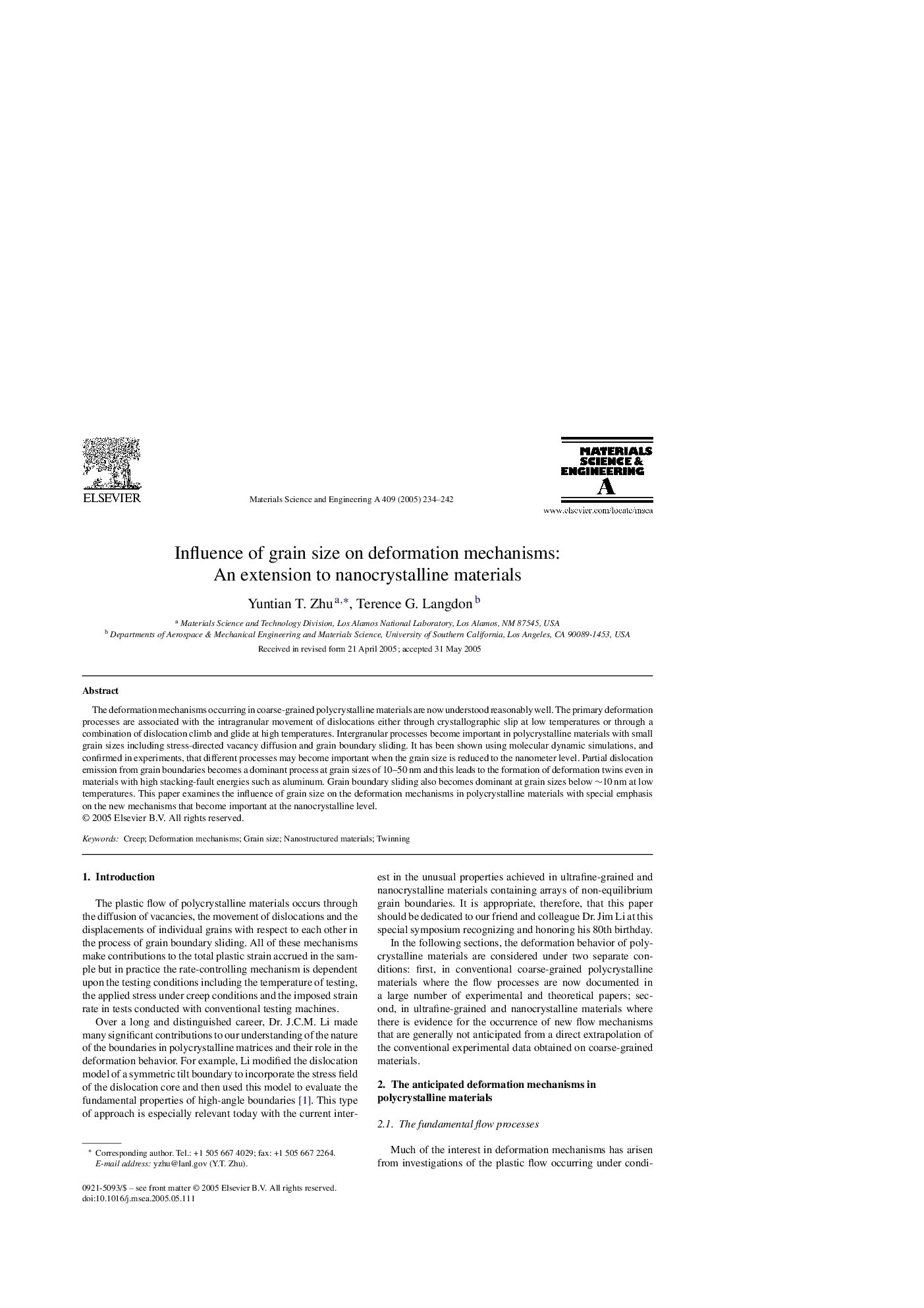| Article ID | Journal | Published Year | Pages | File Type |
|---|---|---|---|---|
| 9795728 | Materials Science and Engineering: A | 2005 | 9 Pages |
Abstract
The deformation mechanisms occurring in coarse-grained polycrystalline materials are now understood reasonably well. The primary deformation processes are associated with the intragranular movement of dislocations either through crystallographic slip at low temperatures or through a combination of dislocation climb and glide at high temperatures. Intergranular processes become important in polycrystalline materials with small grain sizes including stress-directed vacancy diffusion and grain boundary sliding. It has been shown using molecular dynamic simulations, and confirmed in experiments, that different processes may become important when the grain size is reduced to the nanometer level. Partial dislocation emission from grain boundaries becomes a dominant process at grain sizes of 10-50Â nm and this leads to the formation of deformation twins even in materials with high stacking-fault energies such as aluminum. Grain boundary sliding also becomes dominant at grain sizes below â¼10Â nm at low temperatures. This paper examines the influence of grain size on the deformation mechanisms in polycrystalline materials with special emphasis on the new mechanisms that become important at the nanocrystalline level.
Related Topics
Physical Sciences and Engineering
Materials Science
Materials Science (General)
Authors
Yuntian T. Zhu, Terence G. Langdon,
